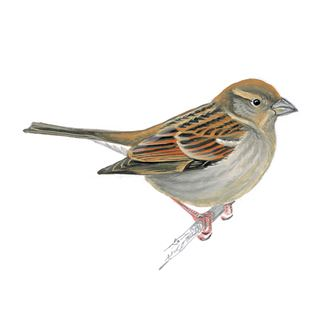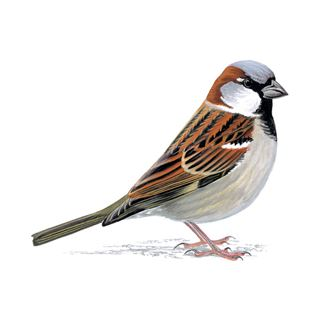 It is a very busy time at the moment for our feathered friends. Watching house sparrows and starlings visit their nests under the eaves of my roof has become one of my favourite pastimes. Constantly flying in and out, to feed their chicks; do they ever rest?
It is a very busy time at the moment for our feathered friends. Watching house sparrows and starlings visit their nests under the eaves of my roof has become one of my favourite pastimes. Constantly flying in and out, to feed their chicks; do they ever rest?
The best part is when you spot a fluffy baby bird, just about to fledge. I consider myself very fortunate to have them here, since both birds are red-listed as a species of high conservation concern.
 The UK house sparrow (the other species of sparrow in the UK is the tree sparrow), has declined by around 70% from 1977 to 2008.
The UK house sparrow (the other species of sparrow in the UK is the tree sparrow), has declined by around 70% from 1977 to 2008.
It’s not all bad news though – more recent surveys suggest that numbers are once again on the increase in Scotland, Wales and Northern Ireland.
In terms of identification, male house sparrows look a little smarter than the females, with their black bibs and white cheeks.
 As for the starling, research shows a decrease in numbers by about 66% from the mid seventies. In the summer, their glossy black plumage shimmers with a purplish-green wash. They also have yellow beaks. In winter their plumage is spotted with beige.
As for the starling, research shows a decrease in numbers by about 66% from the mid seventies. In the summer, their glossy black plumage shimmers with a purplish-green wash. They also have yellow beaks. In winter their plumage is spotted with beige.
Starlings are known for murmurations – when large numbers of starlings flock together – diving and swooping, forming immense patterns in the sky.
Today, the best places to see murmurations are in more rural areas such as Middleton Moor- Derbyshire, Brighton’s derelict west pier and Gretna Green in Scotland.
Have you got sparrows or starlings in your garden or street?
Indoors Activity
Why not join in with the RSPB bird watching challenge – https://www.rspb.org.uk/fun-and-learning/for-families/family-wild-challenge/activities/go-birdwatching/.
Outdoors Activity
Or, make a home for starlings – https://www.rspb.org.uk/get-involved/activities/give-nature-a-home-in-your-garden/garden-activities/createacosystarlinghome/
Diana Williams, local resident who helps with ‘Classroon in the Woods’
